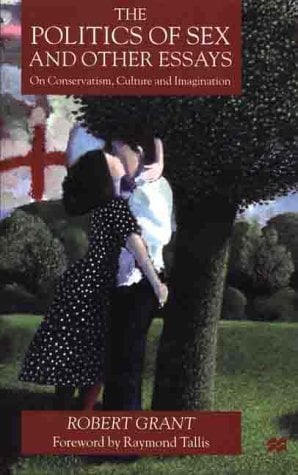Robert Grant’s essays range widely across political philosophy, literature, and aesthetics, from Edmund Burke to Václav Havel, from Jane Austen to the fiction of the 1930’s, from Shakespeare to Tolstoy, from Mozart to Rennie Mackintosh. Yet Grant is always knowledgeable, always clear and readable, always interesting. He is able to cover his range of subjects adequately, without ever lapsing into the obscurity of a polymath or the superficial dazzle of a new Renaissance man.
His most interesting essays concern the nature of conservatism. In the foreword to the book, Raymond Tallis writes:
In Grant’s understanding of it. . . true conservatism is no more hostile to change than to ideas. Some change is inevitable, some positively necessary; but it must be properly informed, preserve continuity and respect tradition (“embodied practical knowledge”). Grant’s conservatism is not a matter of party, nor confined to politics. It grows out of his perception of the interconnectedness of human concerns, and his respect for whatever has evolved peaceably and naturally out of our long-term dealings with each other. Such things, among them culture, elude a narrowly technological, rationalist prospective.
This is an excellent statement of what Grant stands for and why his essays will be a welcome addition to the libraries of conservative individuals and institutions in the English-speaking countries. Grant writes well about Burke, but it is his two essays on 20th-century conservative philosopher Michael Oakeshott that are of most interest. Oakeshott was a respected thinker, yet—as Grant points out—he was never a global guru (unlike, say, the vacuous John Kenneth Galbraith, the deeply flawed and ideological Gunnar Myrdal, or the fellow-travelling Harold Laski), and he deserves to be more widely known. Grant’s essays will help to achieve this. Oakeshott’s great contribution was to expose the irrationalism of “Rationalism,” by which he meant the idea that politics and government can be planned by reference to “abstract intelligence . . . suitably backed by the necessary technical or factual knowledge.” It is a “category mistake” whose proponents fail to see that “every activity generates its own kind of rationality (that is the principles articulate or otherwise, appropriate to its successful pursuit) and that it is foolish and futile to apply the techniques and assumptions appropriate to one kind of activity to others for which they were never designed and from which they never emerged.”
It is not just socialism that Oakeshott is attacking but any kind of politics or political thought involving this fallacy. (As Grant points out, he was critical of Hayek as a crypto-rationalist and has nothing in common with the Archimedean rationalism of later liberal thinkers such as Rawls and Nozick.) On the latter thinkers. Grant comments shrewdly that “it would not be altogether unjust to describe their efforts as exactly the sort of ‘crib’ to politics that Oakeshott once accused Marxism of being.” Oakeshott was not a communitarian but an individualist, understood as “a virtuous explorer of his moral, cultural and intellectual inheritance.”
There is an interesting continuity between the Oakeshott essays and Grant’s own treatment of Charles Rennie Mackintosh and the House Beautiful. Mackintosh, a Scottish architect and furniture designer, was modern and imperious and still has fanatical admirers in countries as distant from Scotland as Japan. An “aesthetic planner,” as Grant calls him, he deliberately designed chairs with backs twice as high as a seated man so that they would be uncomfortable, incompatible with the presence of children, and easily breakable, particularly in the Scottish tea shops that bought them. The fragility of the furniture emphasized the decorum of the tea rooms, in contrast to the raucous and sometimes violent inebriation of the lower-class Glaswegian bar, where even the most robust of furnishings might regularly be smashed to fragments. But then, speculation about aesthetic fashion is vain. It is difficult, for example, to see why we should accept Grant’s thesis that the preceding high-Victorian interiors, whether in Scotland or America, rigorously excluded anything remotely suggestive of death from open display. Surely he is wrong; in an age of early death, the clutter of knickknacks was also a parade of relics of those who had died—the carved walrus tooth brought back by Captain Uncle Harold, long since drowned in the wintry North Atlantic; the vases left to the householder in poor consumptive cousin Mildred’s will.
Robert Grant’s book is a bishop’s egg: Nearly all of it is good, my lord. The Oakeshott and Burke yolk will nourish the mind of the reader, and the aesthetic albumen is bound to please; only the shell is doubtful—the cover has the feel of a Carrington executed by Lytton Strachey’s devotee of that name.
[The Politics of Sex and Other Essays on Conservatism, Culture, and Imagination, by Robert Grant (New York: St. Martin’s Press) 248 pp., $55.00]

Leave a Reply